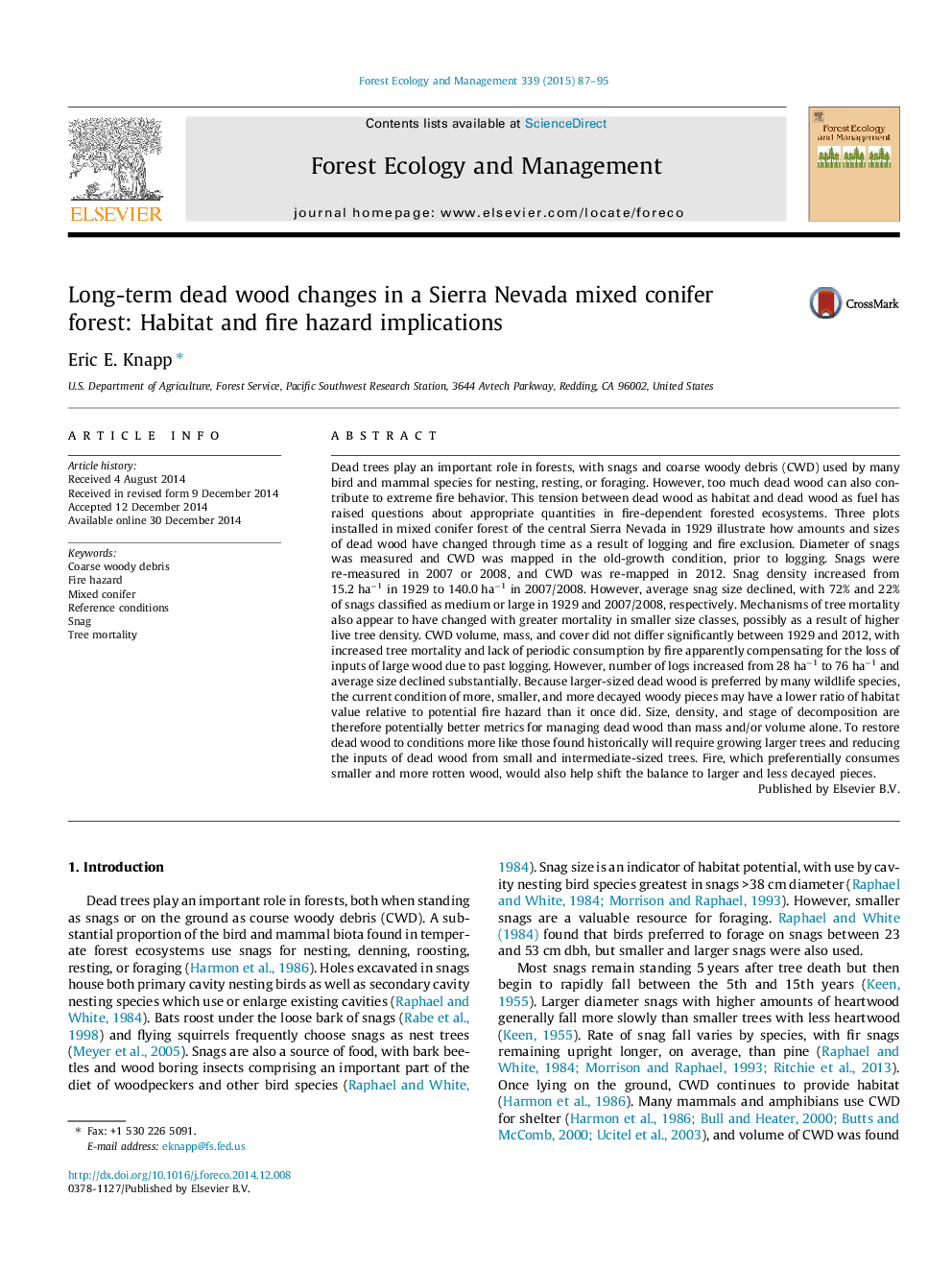| کد مقاله | کد نشریه | سال انتشار | مقاله انگلیسی | نسخه تمام متن |
|---|---|---|---|---|
| 86403 | 159184 | 2015 | 9 صفحه PDF | دانلود رایگان |
• Dead wood change was quantified by re-measuring mixed-conifer plots established in 1929.
• Snags increased over nine-fold, but were of smaller size.
• Coarse woody debris mass did not change but density was higher and size smaller.
• Changes were due to higher tree mortality, past logging, and fire exclusion.
• Dead wood likely has less habitat value relative to fire hazard than it did historically.
Dead trees play an important role in forests, with snags and coarse woody debris (CWD) used by many bird and mammal species for nesting, resting, or foraging. However, too much dead wood can also contribute to extreme fire behavior. This tension between dead wood as habitat and dead wood as fuel has raised questions about appropriate quantities in fire-dependent forested ecosystems. Three plots installed in mixed conifer forest of the central Sierra Nevada in 1929 illustrate how amounts and sizes of dead wood have changed through time as a result of logging and fire exclusion. Diameter of snags was measured and CWD was mapped in the old-growth condition, prior to logging. Snags were re-measured in 2007 or 2008, and CWD was re-mapped in 2012. Snag density increased from 15.2 ha−1 in 1929 to 140.0 ha−1 in 2007/2008. However, average snag size declined, with 72% and 22% of snags classified as medium or large in 1929 and 2007/2008, respectively. Mechanisms of tree mortality also appear to have changed with greater mortality in smaller size classes, possibly as a result of higher live tree density. CWD volume, mass, and cover did not differ significantly between 1929 and 2012, with increased tree mortality and lack of periodic consumption by fire apparently compensating for the loss of inputs of large wood due to past logging. However, number of logs increased from 28 ha−1 to 76 ha−1 and average size declined substantially. Because larger-sized dead wood is preferred by many wildlife species, the current condition of more, smaller, and more decayed woody pieces may have a lower ratio of habitat value relative to potential fire hazard than it once did. Size, density, and stage of decomposition are therefore potentially better metrics for managing dead wood than mass and/or volume alone. To restore dead wood to conditions more like those found historically will require growing larger trees and reducing the inputs of dead wood from small and intermediate-sized trees. Fire, which preferentially consumes smaller and more rotten wood, would also help shift the balance to larger and less decayed pieces.
Journal: Forest Ecology and Management - Volume 339, 1 March 2015, Pages 87–95
